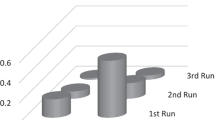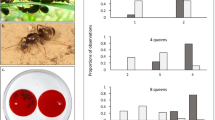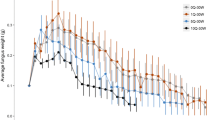Summary:
In polygynous ants, queens often found new nests dependently by budding, where one or more queens leave the old nest with some workers and establish a new one. Even though budding is assumed to be relatively common in polygynous ants, it has rarely been documented. We studied budding in natural colonies of the ant Proformica longiseta, by observations and nest excavations. Buddings were timed so that production of new nests was ergonomically advantageous and food availability was reaching its peak. The budding process lasted a few days, and a specialised group of workers carried immature brood and adult workers and queens to the daughter nest. Parental nests that produced the buds were always large polygynous nests. The buds produced represented on average 23% of the worker force of the parental nest, and included 1-2 queens or gyne pupae but never both.
Similar content being viewed by others
Author information
Authors and Affiliations
Additional information
Received 19 July 2000; revised 27 December 2000; accepted 2 January 2001.
Rights and permissions
About this article
Cite this article
Fernández-Escudero, I., Seppä, P. & Pamilo, P. Dependent colony founding in the ant Proformica longiseta . Insectes soc. 48, 80–82 (2001). https://doi.org/10.1007/PL00001750
Issue Date:
DOI: https://doi.org/10.1007/PL00001750




